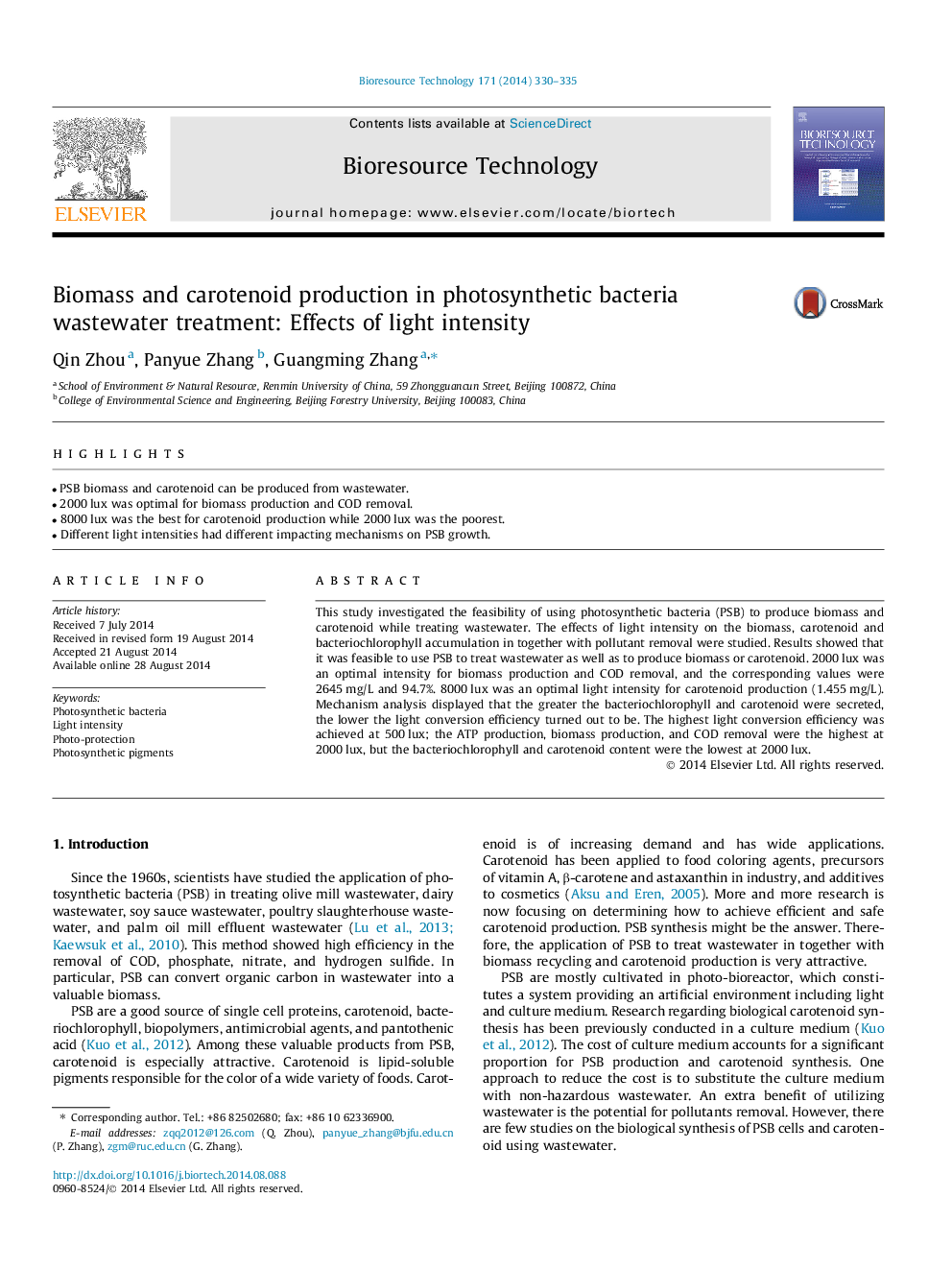| کد مقاله | کد نشریه | سال انتشار | مقاله انگلیسی | نسخه تمام متن |
|---|---|---|---|---|
| 680387 | 1459972 | 2014 | 6 صفحه PDF | دانلود رایگان |
• PSB biomass and carotenoid can be produced from wastewater.
• 2000 lux was optimal for biomass production and COD removal.
• 8000 lux was the best for carotenoid production while 2000 lux was the poorest.
• Different light intensities had different impacting mechanisms on PSB growth.
This study investigated the feasibility of using photosynthetic bacteria (PSB) to produce biomass and carotenoid while treating wastewater. The effects of light intensity on the biomass, carotenoid and bacteriochlorophyll accumulation in together with pollutant removal were studied. Results showed that it was feasible to use PSB to treat wastewater as well as to produce biomass or carotenoid. 2000 lux was an optimal intensity for biomass production and COD removal, and the corresponding values were 2645 mg/L and 94.7%. 8000 lux was an optimal light intensity for carotenoid production (1.455 mg/L). Mechanism analysis displayed that the greater the bacteriochlorophyll and carotenoid were secreted, the lower the light conversion efficiency turned out to be. The highest light conversion efficiency was achieved at 500 lux; the ATP production, biomass production, and COD removal were the highest at 2000 lux, but the bacteriochlorophyll and carotenoid content were the lowest at 2000 lux.
Journal: Bioresource Technology - Volume 171, November 2014, Pages 330–335
